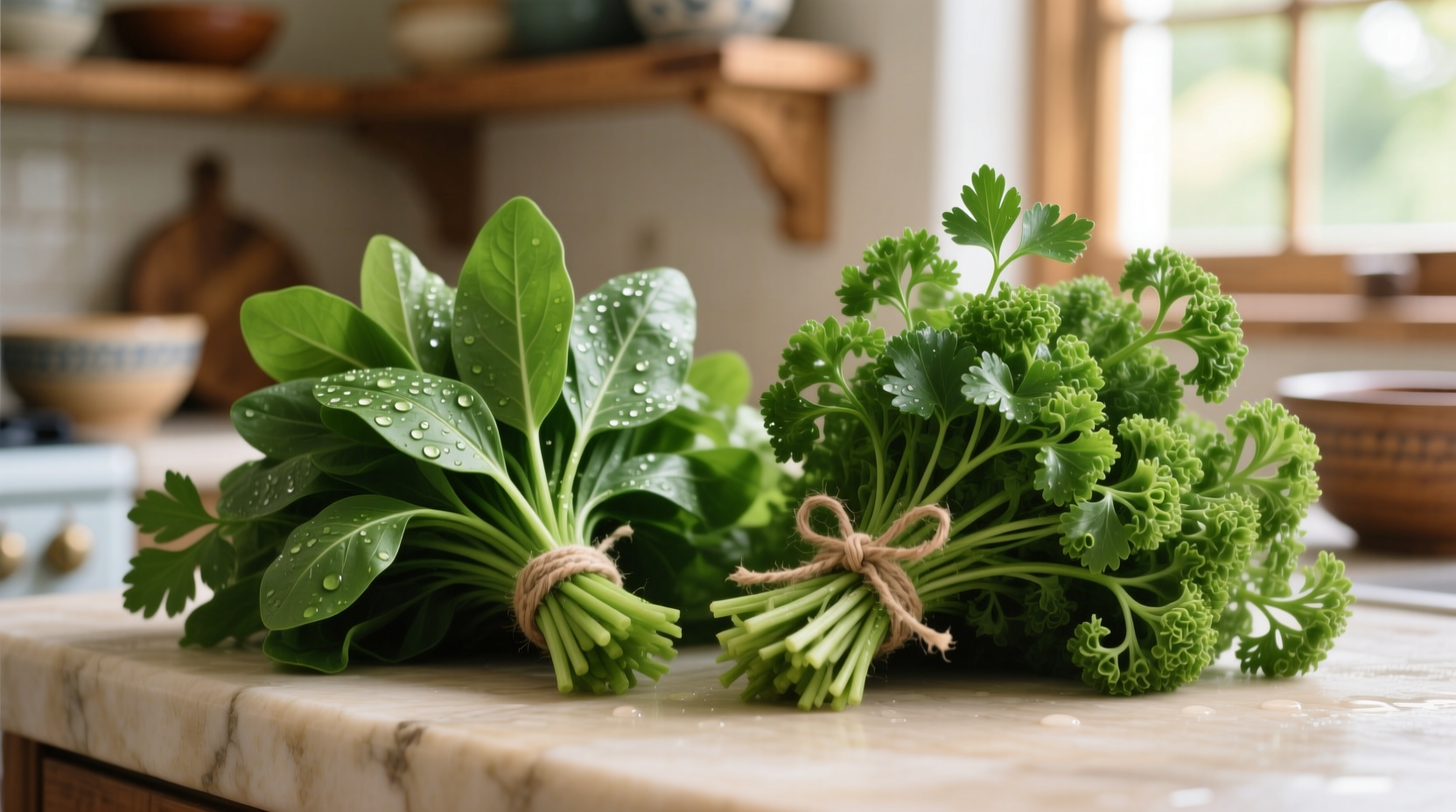If you're searching for information about parsley as a herb, you'll discover there are two primary types: flat-leaf (Italian) parsley and curly parsley. Flat-leaf offers stronger flavor preferred by chefs for cooking, while curly parsley provides milder taste and visual appeal as garnish. Both varieties deliver exceptional nutritional benefits including high vitamin K, C, and A content, plus valuable antioxidants.
Understanding Parsley: More Than Just a Garnish
When most people think of parsley, they picture the humble green garnish pushed to the side of restaurant plates. But this versatile herb deserves far more attention in your kitchen. As a culinary historian with extensive knowledge of herb traditions, I've traced parsley's journey from ancient medicinal plant to essential kitchen staple. Understanding the different parsley varieties transforms how you use this herb in everyday cooking.
Two Main Types of Parsley Explained
Parsley (Petroselinum crispum) belongs to the Apiaceae family, which includes carrots, celery, and cilantro. Despite being commonly treated as mere decoration, parsley actually comes in two distinct varieties that serve different culinary purposes.
| Characteristic | Flat-Leaf Parsley | Curly Parsley |
|---|---|---|
| Appearance | Smooth, flat leaves resembling cilantro | Crinkled, ruffled leaves |
| Flavor Profile | Bolder, more robust herbal flavor | Milder, slightly bitter taste |
| Culinary Best Uses | Cooking applications, sauces, pesto | Garnishing, salads, visual appeal |
| Storage Life | 3-5 days refrigerated | 5-7 days refrigerated |
| Historical Origin | Native to Mediterranean region | Developed through cultivation |
Why Chefs Prefer Flat-Leaf Parsley for Cooking
Professional kitchens overwhelmingly choose flat-leaf parsley (often called Italian parsley) for cooking applications. The stronger flavor holds up better during cooking processes, and the smooth leaves are easier to chop finely without trapping moisture. According to research from the University of California Agriculture and Natural Resources, flat-leaf varieties contain higher concentrations of essential oils that deliver more pronounced flavor.
When making pesto, sauces, or herb blends, flat-leaf parsley provides superior results. Its flavor complements garlic, lemon, and olive oil beautifully in classic Mediterranean dishes. For tabbouleh, traditional recipes specifically call for flat-leaf parsley as the primary ingredient rather than just an accent.
The Practical Advantages of Curly Parsley
While often dismissed as merely decorative, curly parsley has practical advantages worth noting. Its ruffled texture makes it excellent for holding dressings in salads, and the visual contrast it provides can elevate simple dishes. Curly parsley also tends to stay fresher longer in the refrigerator due to its thicker leaves.
Food historians note that curly parsley gained popularity in European cuisine during the 16th century when elaborate food presentation became fashionable. As documented by the USDA National Nutrient Database, both varieties offer nearly identical nutritional profiles despite their visual differences.

Nutritional Powerhouse You're Probably Underutilizing
Parsley packs an impressive nutritional punch that most people miss by treating it as mere garnish. Just one-quarter cup of fresh parsley provides:
- More than 100% of your daily vitamin K requirement
- Nearly 60% of your daily vitamin C needs
- Significant amounts of vitamin A and folate
- Valuable antioxidants including flavonoids and carotenoids
Research published in the Journal of Agricultural and Food Chemistry confirms parsley contains apigenin, a compound with potential anti-inflammatory properties. The National Institutes of Health notes that vitamin K in parsley supports both bone health and proper blood clotting.
When to Choose One Type Over the Other
Understanding context boundaries helps maximize parsley's potential in your cooking:
- Choose flat-leaf parsley when: Making sauces, soups, stews, or any dish where parsley will cook
- Choose curly parsley when: Creating visual presentations, adding to cold salads, or when milder flavor is preferred
- Avoid substitution when: Following traditional recipes that specify one variety (like Lebanese tabbouleh)
- Use both when: Seeking layered texture and flavor complexity in dishes
Growing Your Own Parsley Successfully
Unlike many herbs, parsley grows as a biennial plant, meaning it completes its life cycle over two years. For home gardeners, this means:
- Start seeds indoors 8-10 weeks before last frost date
- Transplant outdoors when seedlings reach 3 inches tall
- Provide partial shade in hot climates (full sun in cooler regions)
- Harvest outer stems first to encourage continued growth
- Expect slower germination than other herbs (up to 4 weeks)
According to extension resources from Cornell University's College of Agriculture and Life Sciences, parsley grows best in well-drained soil with consistent moisture. The first year produces the most flavorful leaves, while the second year focuses on flowering and seed production.
Creative Ways to Use Parsley Beyond Garnish
Transform how you use parsley with these practical applications:
- Create vibrant parsley pesto by substituting half the basil with flat-leaf parsley
- Add chopped parsley to morning smoothies for nutrient boost
- Make parsley-infused olive oil for dipping bread
- Blend parsley stems into vegetable stock for added flavor depth
- Prepare traditional Lebanese tabbouleh with parsley as the star ingredient
Parsley Substitutes When You've Run Out
If you find yourself without parsley, consider these alternatives based on your recipe needs:
- For cooking: Cilantro (in Latin or Asian dishes), chervil, or celery leaves
- For garnish: Fresh dill, chives, or microgreens
- For nutritional value: Watercress, arugula, or spinach
Remember that substitutes won't replicate parsley's unique flavor profile exactly, but they can provide similar visual appeal or complementary flavors depending on your dish.











 浙公网安备
33010002000092号
浙公网安备
33010002000092号 浙B2-20120091-4
浙B2-20120091-4